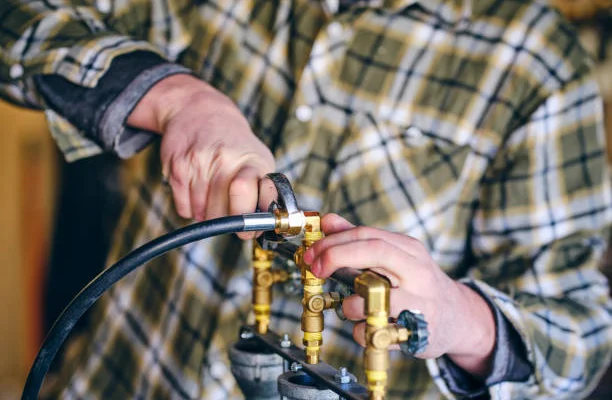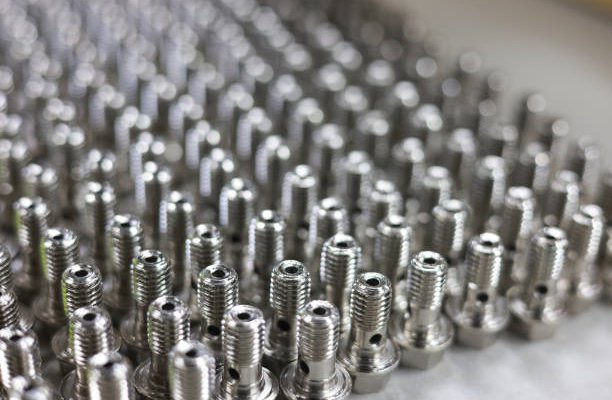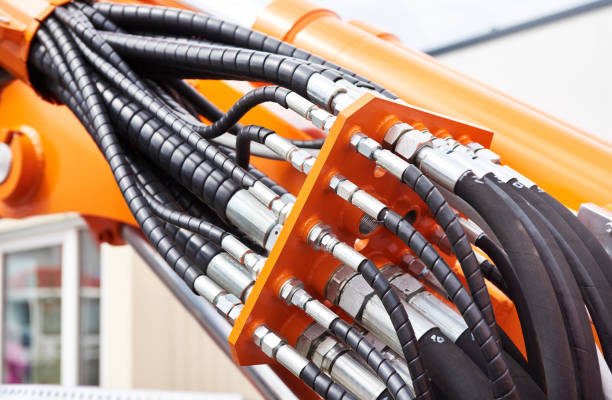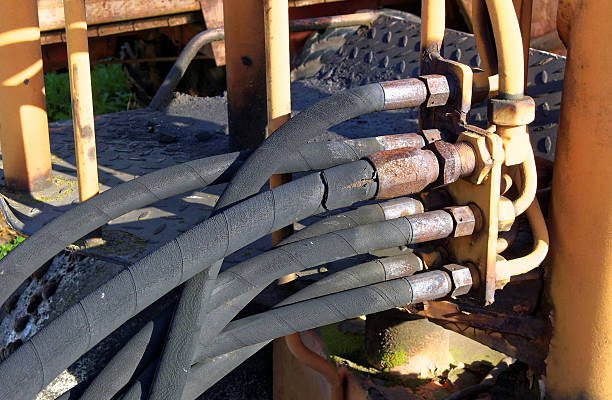1. Introduction to Reusable Hydraulic Fittings
Hydraulic systems are the muscle behind heavy machinery, agricultural equipment, and countless industrial tools. Without secure and efficient connections, the entire system is at risk of leaking, losing pressure, or failing outright. This is where reusable hydraulic fittings shine.
Unlike crimped fittings that require specialized hydraulic crimpers, reusable fittings can be installed and removed using simple hand tools. This makes them ideal for emergency field repairs and situations where downtime can be costly.
They are most commonly used in:
- Agriculture – tractors, combines, and sprayers.
- Construction – excavators, loaders, and cranes.
- Manufacturing – assembly lines, presses, and hydraulic lifts.
- Marine applications – steering systems, hydraulic winches.
If you’ve ever been mid-operation and a hose burst, knowing how to match the correct reusable fitting to your hydraulic hose could mean the difference between finishing the job and waiting hours for service.
2. What Are Reusable Hydraulic Fittings?
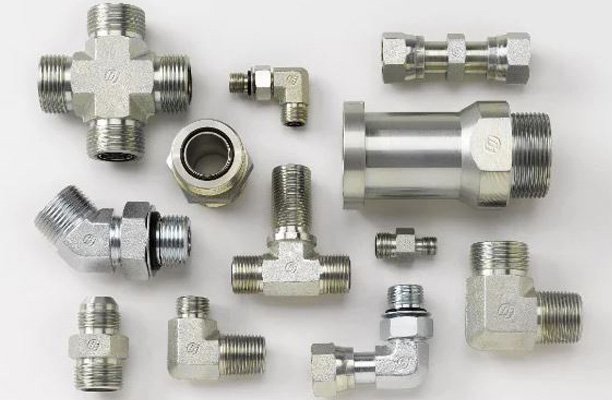
A reusable hydraulic fitting is a two-piece connector designed for repeated assembly and disassembly. The two key components are:
- Socket (Collar) – This part is threaded internally and screws onto the outer cover of the hydraulic hose.
- Insert (Nipple) – This component slides inside the hose’s inner tube and seals against fluid leakage while providing a secure connection point.
Key characteristics of reusable fittings:
- Made from high-strength steel, stainless steel, or brass.
- Available in multiple thread types (NPT, JIC, BSP, ORFS).
- Designed for medium-pressure applications (usually up to 3,000 PSI, though heavy-duty variants exist).
Unlike one-time-use crimp fittings, these fittings can be removed, inspected, cleaned, and reinstalled on a new hose if they remain in good condition.
3. Benefits of Using Reusable Hydraulic Fittings
Choosing reusable fittings offers significant advantages:
a) Cost Efficiency
Instead of discarding a damaged hose and its fitting, you can salvage the fitting and install it on a new hose. Over time, this reduces replacement costs.
b) No Specialized Tools Required
Most installations only require two wrenches, a hose cutter, and lubricant—no expensive crimping equipment.
c) Faster Field Repairs
With no need for a shop press or crimp machine, you can repair hoses on-site, keeping operations running smoothly.
d) Flexibility in Hose Selection
Many reusable fittings are compatible with multiple hose brands and types (within certain specifications).
e) Environmentally Friendly
By reusing components instead of discarding them, you contribute to waste reduction and resource conservation.
4. Understanding Hydraulic Hoses
Hydraulic hoses are the lifelines of fluid power systems, channeling pressurized hydraulic fluid between pumps, cylinders, valves, and motors. They’re designed to handle high pressures, resist abrasion, and remain flexible enough for dynamic equipment movement.
Types of Hydraulic Hoses
- Low-pressure hoses – Ideal for return lines or suction applications where fluid is moving at lower pressures.
- Medium-pressure hoses – Common for standard hydraulic systems in agricultural and light industrial machinery.
- High-pressure hoses – Designed for extreme conditions like heavy construction equipment and mining operations.
Hose Size and Pressure Ratings
Choosing the correct size is critical. A hose that is too small restricts flow, causing pressure drops and heat buildup. A hose that is too large can lead to unnecessary bulk and cost. Manufacturers provide pressure ratings in PSI or bar, which must match or exceed your system’s operating pressure.
Materials and Reinforcement Layers
Hydraulic hoses are usually made from synthetic rubber, thermoplastics, or Teflon, reinforced with:
- Braided steel wire – Flexible, ideal for medium pressures.
- Spiral-wound steel – Stiffer but can handle higher pressures.
- Textile braids – Lightweight, suited for lower pressures.
5. Importance of Correct Fitting-to-Hose Matching
Correctly matching the fitting to the hose is not just a matter of performance—it’s about safety. A mismatch can lead to catastrophic failures, including:
- Sudden hose blowouts releasing high-pressure hydraulic fluid.
- Loss of control in machinery, leading to accidents.
- Increased wear on pumps and valves due to leaks or pressure loss.
When fittings and hoses are matched properly, you ensure:
- Leak-free performance – Minimizing hydraulic fluid loss and contamination.
- Extended service life – Both hose and fitting last longer under stress.
- Consistent system pressure – Preventing inefficiencies and overheating.
Industry standards such as SAE J517 and ISO 1436 outline specifications for hose and fitting compatibility, making them a key reference point during selection.
6. Identifying the Correct Hose Size
Accurate sizing is the foundation of a safe hydraulic connection. You’ll need to measure:
- Inside Diameter (ID) – The most critical measurement, taken with a caliper or hose gauge.
- Outside Diameter (OD) – Helps verify hose compatibility with the fitting’s socket.
- Length – Account for movement and bending; avoid overstretching or compressing the hose.
- Bend Radius – The minimum radius the hose can bend without kinking, as specified by the manufacturer.
Pro Tip: Always match the fitting size to the hose ID rather than OD. Even slight mismatches can cause improper sealing and potential blowouts.
7. Choosing the Right Reusable Fitting Type
Not all reusable hydraulic fittings are the same. The right choice depends on the application, space constraints, and thread compatibility.
By Shape and Function
- Straight fittings – Ideal for direct, in-line connections when the hose runs straight without bends.
- Elbow fittings (45° or 90°) – Perfect for tight spaces where hoses need to turn sharply without kinking.
- Swivel fittings – Allow rotational movement, reducing stress on the hose in applications where the connected component moves.
By Thread Type
Understanding thread types is crucial to avoid cross-threading and leaks:
- NPT (National Pipe Thread) – Common in North America; tapered threads create a seal.
- JIC (Joint Industry Council) – Uses a 37° flare for sealing; highly reliable for high-pressure systems.
- BSP (British Standard Pipe) – Widely used internationally; available in parallel or tapered versions.
- ORFS (O-Ring Face Seal) – Provides leak-free connections for high-vibration systems.
Pro Tip: Always verify the thread standard using a thread gauge and compare it with manufacturer specifications before installation.
8. Step-by-Step Process to Match Fittings to Hose
Getting the match right is both a selection and installation process. Here’s how to do it properly:
1: Gather Required Tools and Equipment
- Two adjustable wrenches (or the correct-sized open-end wrenches)
- A dedicated hydraulic hose cutter or fine-toothed hacksaw
- Light machine oil or assembly lubricant
- Calipers or hose ID gauge
2: Cut the Hose Properly
- Secure the hose in a vise (light pressure to avoid crushing).
- Use a hose cutter for a clean, square cut.
- Remove any debris or rubber shavings from inside the hose.
3: Install the Socket End
- Thread the socket onto the hose’s outer cover by hand.
- Turn it until the end of the hose is flush with the socket’s internal shoulder.
- Avoid forcing it at an angle to prevent damaging the hose cover.
4: Attach the Insert End
- Apply a small amount of lubricant to the insert’s barbed end.
- Push the insert into the hose and socket assembly.
- Thread the insert into the socket using a wrench, ensuring smooth engagement.
5: Check for Alignment and Tightness
- Tighten according to manufacturer torque specs (over-tightening can damage threads).
- Visually inspect for even engagement between the insert and socket.
9. Common Mistakes to Avoid
Even experienced technicians can make costly errors when matching fittings to hoses. Here are the most frequent pitfalls:
1. Using the Wrong Hose Size
A mismatch between hose ID and fitting size leads to poor sealing, reduced pressure, and potential blowouts.
2. Mixing Incompatible Materials
For example, pairing aluminum fittings with steel components in a high-pressure, corrosive environment can cause galvanic corrosion.
3. Over-Tightening the Connection
Excessive force can strip threads or deform sealing surfaces, leading to leaks.
4. Ignoring Thread Compatibility
Trying to force a BSP fitting into an NPT port will almost always result in a damaged connection.
5. Reusing Damaged Fittings
If a fitting shows cracks, deep scratches, or excessive wear, replacing it is safer than risking a failure.
10. Maintenance Tips for Reusable Fittings
A properly installed fitting can last for years, but only if it’s regularly inspected and maintained. Preventive care not only extends the life of your hydraulic components but also minimizes the risk of costly downtime.
Routine Inspection Checklist
- Check for leaks at the connection points after every 50–100 hours of operation.
- Look for cracks or rust on the fitting body.
- Inspect hose condition for bulges, cuts, or worn spots near the fitting.
Cleaning Practices
- Wipe down fittings with a clean, lint-free cloth after use in dirty or dusty environments.
- Avoid harsh chemicals that may corrode metal surfaces or degrade hose material.
- If contamination occurs inside the fitting, flush with clean hydraulic oil before reassembly.
Replacement Guidelines
- Replace fittings showing signs of thread wear, deformation, or severe corrosion.
- If a fitting has been involved in a blowout or severe pressure spike, replace it even if it appears undamaged.
- Always use fittings from the same manufacturer as your hose when possible, to ensure exact compatibility.
Conclusion
Knowing how to match the reusable hydraulic fitting to hose is a skill that can save time, money, and headaches in both industrial and mobile hydraulic applications. The process involves more than just threading parts together—it requires correct sizing, thread compatibility, proper installation techniques, and regular maintenance.
FAQs
Q1: Can I reuse fittings on different hoses?
Yes, as long as the hose matches the fitting’s size, type, and pressure rating. Always inspect the fitting before reuse.
Q2: How many times can a reusable fitting be used?
It varies by manufacturer, but many can be used 3–5 times or more if they remain in good condition.
Q3: Do reusable fittings work with all hose brands?
Not necessarily. While many are cross-compatible, always confirm with manufacturer specifications to avoid mismatches.
Q4: How do I know if my fitting is leaking?
Look for visible hydraulic oil around the joint, check for a drop in system pressure, or watch for air bubbles in the hydraulic fluid reservoir.
Q5: Can I install reusable fittings without special tools?
Yes, most only require basic hand tools like wrenches and a proper hose cutter.
Q6: What’s the difference between crimped and reusable fittings?
Crimped fittings are permanently attached using a crimping machine, while reusable fittings are mechanically threaded onto the hose and can be removed or replaced.

